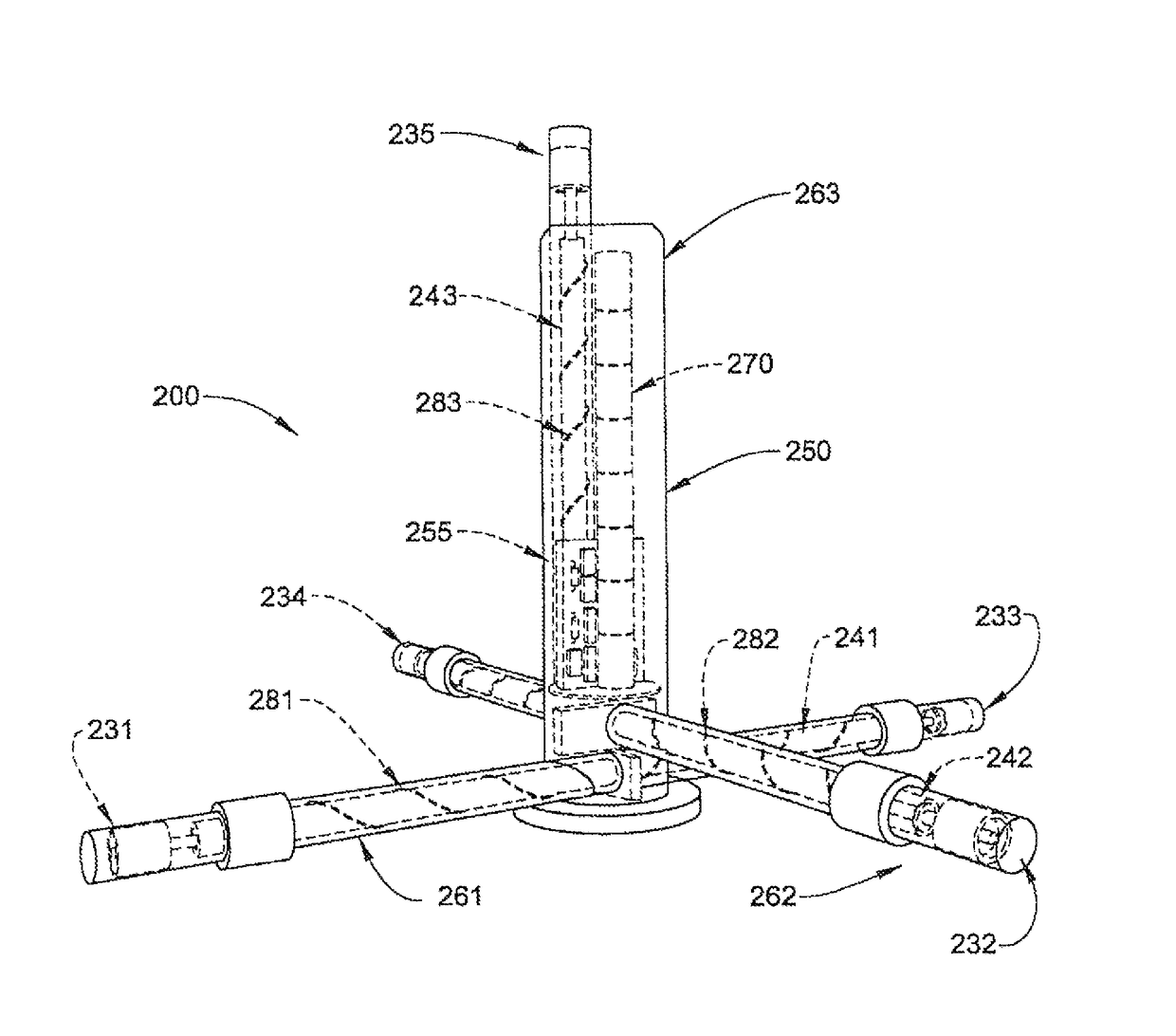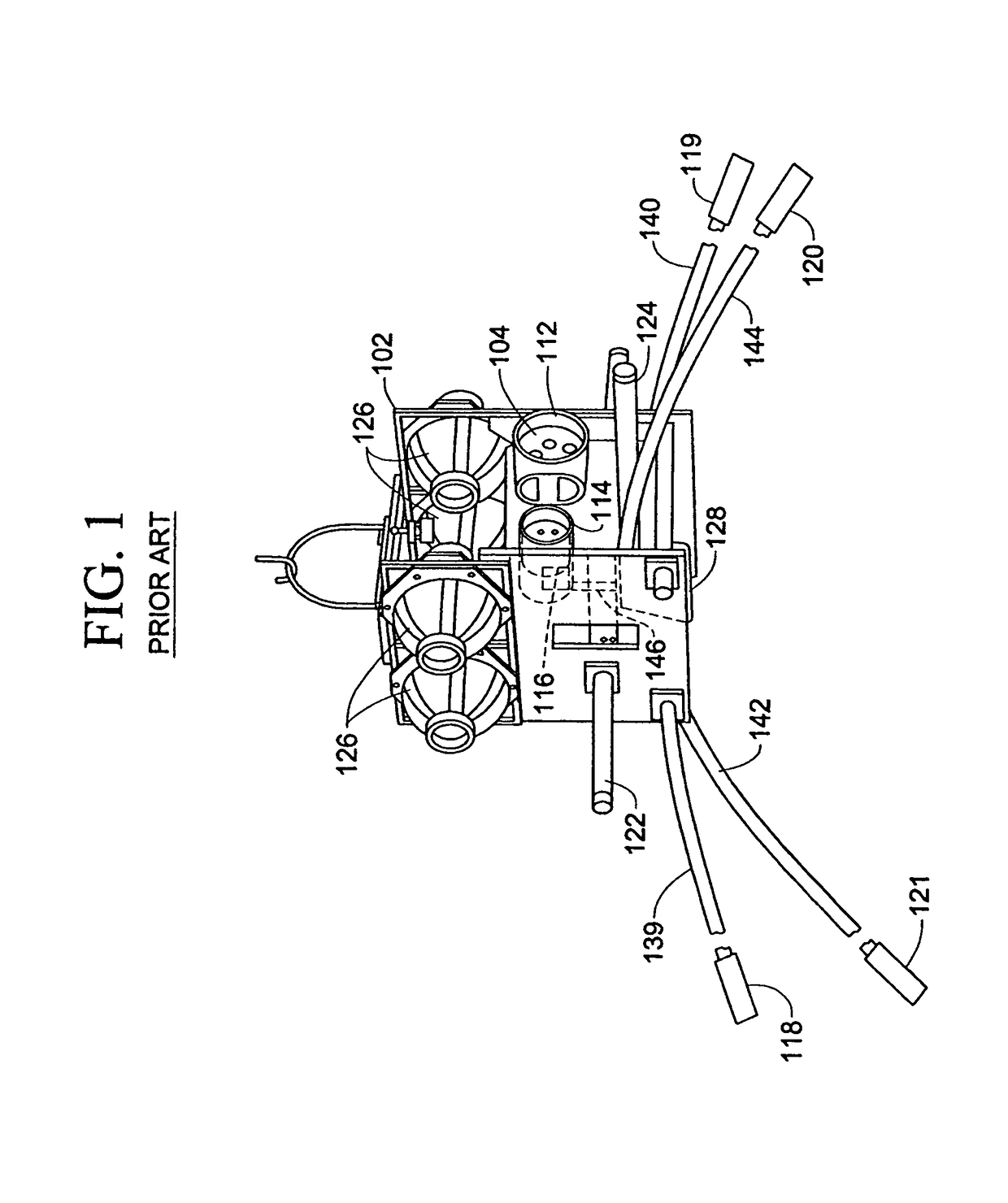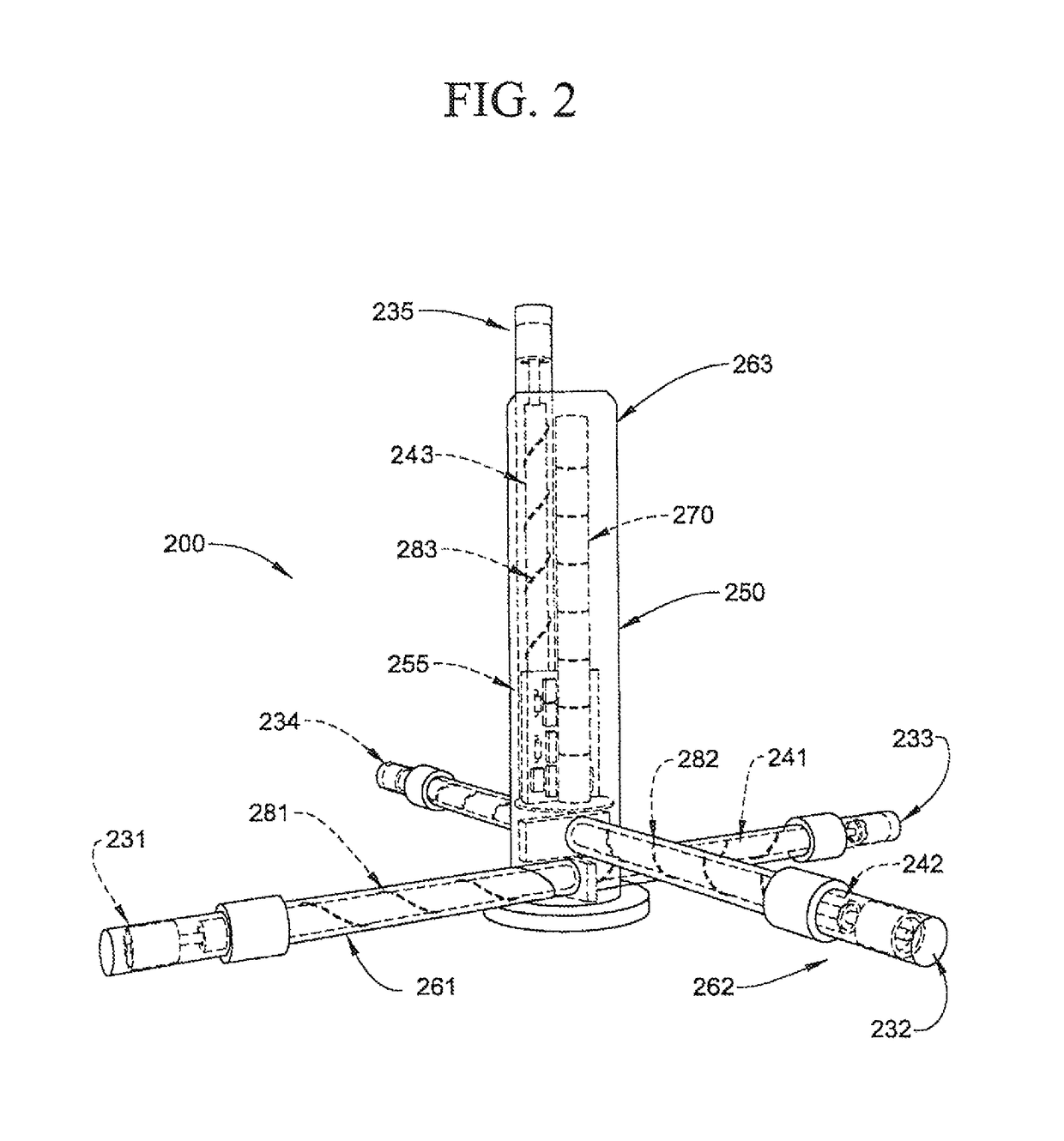Compact underwater electromagnetic measurement system using magnetic sensors and electrical sensors having capacitive electrodes
a capacitive electrode and electromagnetic measurement technology, applied in the field of measuring electric and magnetic fields, can solve the problems of reducing the overall reliability of the measurement system when deployed, raising the risk of corrosion potentials in the sensing circuit, and cumbersome systems, so as to achieve the effect of convenient us
- Summary
- Abstract
- Description
- Claims
- Application Information
AI Technical Summary
Benefits of technology
Problems solved by technology
Method used
Image
Examples
Embodiment Construction
[0041]With initial reference to FIG. 2, a sensor package 200 for measuring electric and magnetic fields comprises a compact arrangement of electric potential antennas 231-235 and magnetic induction coils 241-243 integrated in a single pressure vessel 250. A data acquisition system 255 to record and save sensor data and a power supply 270 are also housed within pressure vessel 250. Pressure vessel 250 is comprised of discrete connected compartments 261, 262, 263 to minimize size and weight. All electrical connections to and between the antennas 231-235, coils 241-243 and data acquisition system 255 are enclosed within pressure vessel 250. All electrical components remain connected at all times. In particular, antennas 231-235, coils 241-243 and other electrical systems are never disconnected from data acquisition system 255 of system 200 during normal operation.
[0042]The single integrated form of pressure vessel 250 enables the magnetic field induction coils 241, 242 to be configured...
PUM
 Login to View More
Login to View More Abstract
Description
Claims
Application Information
 Login to View More
Login to View More - R&D
- Intellectual Property
- Life Sciences
- Materials
- Tech Scout
- Unparalleled Data Quality
- Higher Quality Content
- 60% Fewer Hallucinations
Browse by: Latest US Patents, China's latest patents, Technical Efficacy Thesaurus, Application Domain, Technology Topic, Popular Technical Reports.
© 2025 PatSnap. All rights reserved.Legal|Privacy policy|Modern Slavery Act Transparency Statement|Sitemap|About US| Contact US: help@patsnap.com



